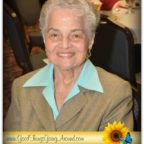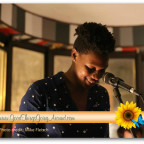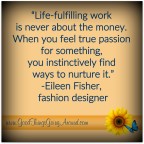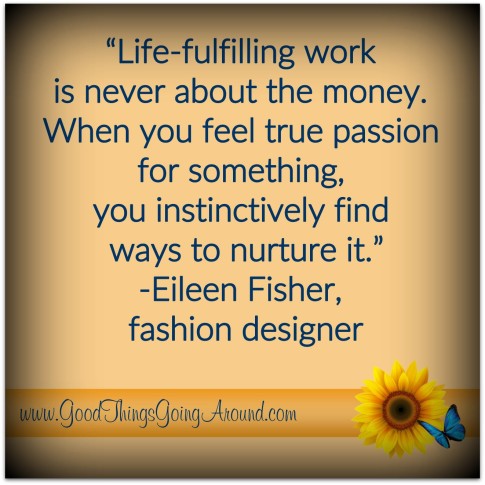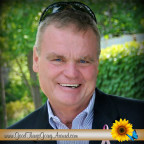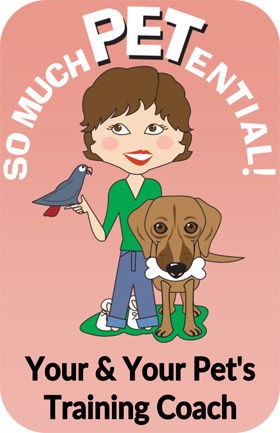featured
Carol Sanger Has A Heart For Pets
Carol Sanger has been a lifelong champion for non-human (and human) animals. Her compassion has saved and enriched the lives of hundreds – if not thousands – of dogs and cats; and causes she has supported have been a lifeline for vulnerable people who cannot afford the necessary expenses of medical pet care.
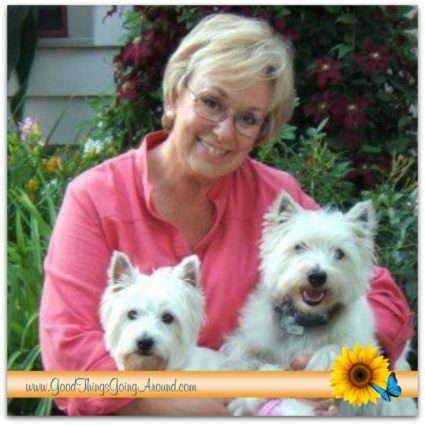 For all that she does and all that she stands for, the Cincinnati SPCA is honoring Carol with this year’s P.B. Johnston Humane Care Award that will be presented at its 2016 Fur Ball Gala.
For all that she does and all that she stands for, the Cincinnati SPCA is honoring Carol with this year’s P.B. Johnston Humane Care Award that will be presented at its 2016 Fur Ball Gala.
Even during her long career as vice president of external affairs for Federated Department Stores (now Macy’s), she focused the company’s philanthropy on animal welfare issues. However, it was upon her retirement in 2005 that she was able to devote so much energy toward volunteer efforts.
I got to know Carol when I was contracted to do public relations for United Coalition for Animals (UCAN). For five years Carol served as its board president and led its $400,000 fundraising campaign to build the region’s first low-cost spay/neuter clinic. Later she helped establish (and served as its board chair for two years) the nonprofit Pets in Need of Greater Cincinnati, a nonprofit veterinarian wellness clinic for pet caregivers with financial challenges. Now she is board chair for the League for Animal Welfare, and excited about that rescue group’s recent growth. The League just opened a mobile vet clinic that travels to rural communities where 90% of residents are supported with government assistance.
Of course, when you talk about Carol’s volunteer work, you have to include her work with Westie (West Highland Terrier) rescues. She and another woman, Sue Durkin, took over the rescue arm of the Westie Club of Indiana in 2002, developing it into a nonprofit, Westie Rescue Indiana, that serves three states and has cumulatively placed over 600 dogs since then. (They are in the process of dissolving it and merging it into Great Lakes Westie Rescue.)
Lisa: How did you love for Westies evolve?
Carol: We got our first Westie actually by accident in 1988. I went to a pet store with my brother Kenny to get booties for one of our Shih tzu’s. The store didn’t have booties but they did have a little, adorable white dog marked down for a quick sale. While I was reading a book they gave me on West Highland Terriers, Kenny was holding her. She came home with us and we named her Kippy. We were hooked and went to a breeder to get a puppy that we named Ditto. We thought all Westies would be mellow like Kippy but Ditto was very different and very busy.
Lisa: Tell us about your first pet.
Carol: I was probably in the 4th grade when my first pet was a little black cat that my uncle, who was a builder, found in one of the houses he was building. There were actually three kittens but that little black one was my favorite. It was the runt of the litter and the others were picking on it. Animals bring out your maternal instinct. I always swore since then that I would always have a black cat. Later I had a black cat who was with me 13 years. And I have a black cat now.
Lisa: Why is this volunteer work so important to you?
Carol: Several reasons. Being able to rescue and to watch those animals who have suffered some trauma to learn to trust again is like watching a flower bloom. Slowly it opens and there is a beautiful creature that feels safe for the first time in its life.
Also, on the other side, pets are really like surrogate kids for so many people. What society needs to recognize is the importance of pets in people’s lives. Animals are so important for seniors and those who don’t have much other reason to get out of bed. Pets make these people feel loved and appreciated. Helping people keep their pets is not a luxury, it is essential. It is a huge emotional connection to life and living for many.
Lisa: What meaning have pets brought to your life?
Carol: Kenny and I currently have 12 dogs, nine cats, three goats and a miniature donkey. I can’t imagine life without them. They are part of our family.
Marian Spencer Honored
 This week, I got to meet a real hero.
This week, I got to meet a real hero.
At nearly 96 years of age, Marian Alexander Spencer is an endearing, down-to-earth leader who has championed human rights and equality through her lifetime. She has been honored time and again for her unrelenting commitment to positive change; and this week she was recognized twice – the Cincinnati Human Relations Commission (CHRC) and the office of Cincinnati Council member Wendell Young announced a downtown street named for her legacy; and the Assistance League of Greater Cincinnati presented her with its esteemed annual Aspire Cincinnati Award.
Marian stood behind the podium at the Aspire Cincinnati™ Award Luncheon, and told a filled room of her grandfather who was a freed slave. His advice to her, and her brothers and sister, was always to ‘get your education, vote, and find people who will move you forward.’ (The Award is given to a local community leader and philanthropist who has demonstrated a passion to inspire and aspire, and to giving back.)
She followed that advice, graduating Gallia Academy High in Gallipolis as co-valedictorian and a member of the National Honor Society. She moved to Cincinnati to attend the University of Cincinnati, earning her bachelor of arts degree and meeting her husband, Donald A. Spencer.
Marian is a woman who has the courage to look adversity in the face and say, we can do better and we will all be better when we are as one. 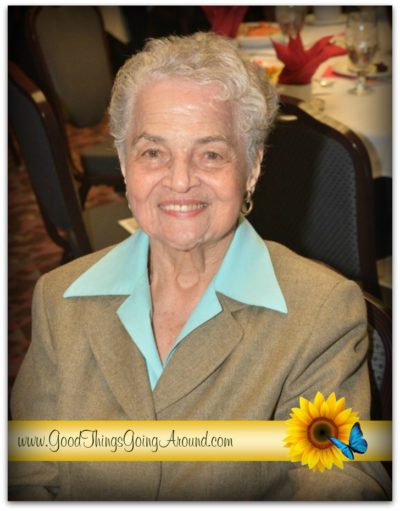 According to the Cincinnati Museum Center, one of her earliest, most visible civil rights activities was in 1952 when she chaired the NAACP Legal Action vs Coney Island so that her sons Donald Jr. and Edward Alexander could swim there. Marian then became a life member of the NAACP, serving on the Executive Board, as chairman of both the Legal Redress and Education committees. In 1981, she became the first female president of the Cincinnati branch.
According to the Cincinnati Museum Center, one of her earliest, most visible civil rights activities was in 1952 when she chaired the NAACP Legal Action vs Coney Island so that her sons Donald Jr. and Edward Alexander could swim there. Marian then became a life member of the NAACP, serving on the Executive Board, as chairman of both the Legal Redress and Education committees. In 1981, she became the first female president of the Cincinnati branch.
She also served as chairperson of the Community Steering Committee for Indigent Defense, as chairperson of the Ohio Civil Rights Commission, and as president of both Woman’s City Club and Links, Inc. In addition, she was a member of the University of Cincinnati’s Board of Trustees. In 1983, Marian was elected to Cincinnati City Council as a Charterite and served for one term.
Sitting at her side, holding her hand and being warmed by her smile; I felt as if I had known Marian my entire life. Her sweet, tenderness reminds me so much of my late grandmother, who traveled as a young girl on a crowded boat from Russia to find hope in America and who died at 101.
Marian’s strength of character and tenacity to create a world where we can all be stronger and happier together is what makes her a hero. I am so glad for the opportunity to have gotten to know her, and for her legacy she has bestowed on our Greater Cincinnati region and beyond.
About the Assistance League:
The Assistance League of Greater Cincinnati is a nonprofit, all-volunteer organization dedicated to meeting critical needs of children and adults by identifying, developing, implementing and funding ongoing community programs. If you would like more information including membership, please visit their website.
Please click here to see my full photo album from the event on my Good Things Going Around Facebook page.
#GoodThingsCincy
Elese Daniel Is Superstar Writer
If you have ever reached out to Cincinnati Vice Mayor David Mann, you more than likely have come in contact with Elese Daniel. As his community liaison and office aide, she is his bridge to Cincinnati residents – answering calls and emails, scheduling community council meetings (there are 50 councils in Cincinnati), managing his calendar, and even updating his Facebook page.
 “This is the coolest way to learn about the city,” she told me.
“This is the coolest way to learn about the city,” she told me.
Her path to City Hall began in South Bend, Indiana, where she remembers her love for writing evolving since the third grade. That was when a story she wrote (and illustrated) placed in a scholastic book challenge, giving her the opportunity to read her it out loud before a gymnasium filled with people. Standing in front of a microphone to words you molded into creative expression was a REALLY big deal for a little girl. Since then, Elese said, “I thought of myself as a superstar writer.”
But, for awhile anyway, that superstar was more known for her skills on the basketball court than on paper. After all, her older brother played the sport and he was super cool. She wanted to be just as cool so she would follow him to the pa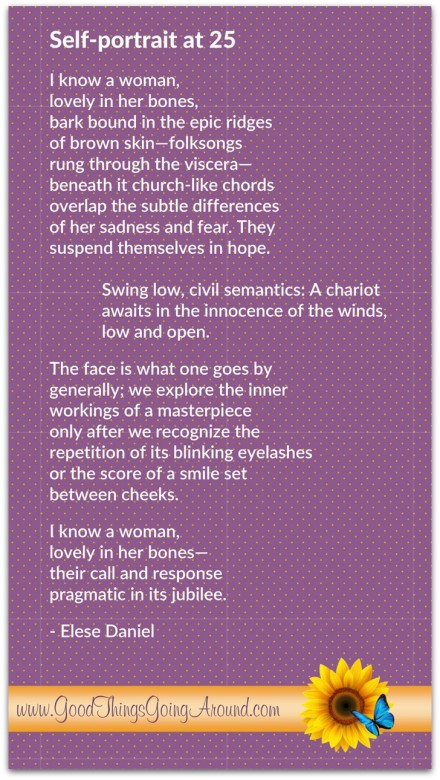 rks. She played in amateur leagues, in elementary, middle and high school; and ultimately landed a full scholarship to the University of Cincinnati where she studied journalism.
rks. She played in amateur leagues, in elementary, middle and high school; and ultimately landed a full scholarship to the University of Cincinnati where she studied journalism.
Ironically it was basketball that afforded her the ability to go to college, and it was a career ending ACL tear that gave her reason to refocus on her original love. She especially enjoyed writing about stories of other people and soon found herself doing assignments for online publications such as Soapbox Media.
Last year, through her volunteer involvement with Chase Public, a collaborative space for art and gatherings, she became a major contributor to the city-wide initiative of ArtWorks called ‘Ink Your Love.’ She also won third place in a poetry contest of the Cincinnati Symphony Orchestra about the meaning of freedom. This is her poem.
These days people have forgotten about her basketball history and she doesn’t even enjoy most sports much any more; but she is a big fan of bicycles. She rides her bike to work most days, likes bike polo, and hangs out with other bike fans.
Elese credits her U.C. professors and administrators for much of her career success. And it was Journalism Director of Undergraduate Studies, Jenny Wohlfarth, who helped Elese get her job at City Hall.
What is Elese’s advice to others on pursuing life? “Just do it,” she said.
You can read more about Elese in this U.C. article.
#GoodThingsCincy
Nurture Life-Fulfilling Work
A Lesson In Diversity
I met actor John Lawson through my work promoting the 2015 Cincinnati ReelAbilities Film Festival. He became a very dear friend, mentor and role model to me.
John and another friend, Danny Woodburn, are two highly talented actors and comedians who I respect so much for their ambition, professionalism and integrity (among many other values). And, with so much hype last night and leading up to last night of the inclusion issues surrounding the Oscars, there was a population who needed to be part of that discussion and was omitted. It is the population to which John and Danny belong, actors who have disabilities. There are many of them. They want and deserve equal opportunities but few of them get the roles. How often it is that Hollywood casts actors without disabilities to play the role of those very capable actors who do have disabilities. Really, this discussion needs to happen around every workplace and within the community as well. When we talk about inclusion and diversity, we need to remember it is not simply a black or white issue. It is much broader.
John wrote this about himself. It has a pretty important message within in. Please take a few minutes to read his story…and think about what it is you can learn 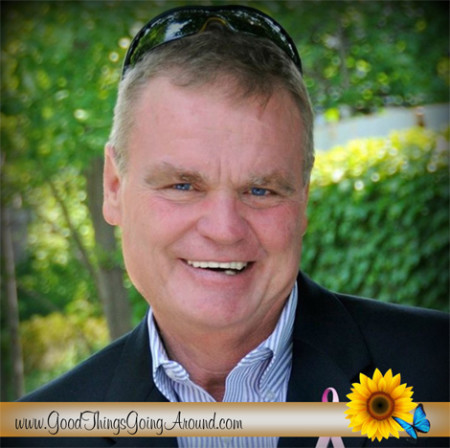 from it.
from it.
February 4th 2016 passed and I completely forgot that 29 years ago in 1987, I was in the North Carolina Jay Cee Burn Center and the surgeons were amputating my left hand. About one month later, they had to amputate my right hand as a result of injuries I sustained in an electrical accident. I was working a “real job” as my dad use to say in between acting and singing jobs. I had started playing piano at age three, started lessons at four and took lessons continuously for 17 years. And now after spending over half my life studying piano, at age 30 I would never play again. That day started me on a road that I never intended to take and down a path that has been filled with the perils and rewards of living with a disability.
First I have to say, I am not here to inspire you. I have lost count of the number of strangers that approach me in public while shopping or pumping gas to tell me that I am an inspiration. I guess they mean well, but they are just sort of congratulating me for getting up that morning and remembering to put my pants before I left the house. There is nothing inspirational about pumping gas or grabbing a can of green beans off the shelf. I am here to tell you that you have been lied to about disability. Most people believe that because you have a disability that your life is worse; that being a disabled person is a bad thing and that if you live with the disability, it makes you exceptional. Living with a disability is not a bad thing and it certainly doesn’t make you exceptional or inspirational.
Unfortunately, with the rise of FaceBook, InstaGram and Twitter, this falsehood endures and is reinvigorated by pictures of a child running on carbon fiber blades with the words “ Your excuse is invalid,” or a person using a wheelchair and the words, “Before you quit, try.” Or a person with Downs Syndrome smiling and the words, “The only disability in life is a bad attitude.” There are many more and I know you’ve seen them. It’s what I call inspirational porn. You may snicker, but I use the word “porn” purposefully, because these images belittle and objectify one group of people for the sole benefit of another group of people. In the examples above, we are trivializing and objectifying disabled people for sole benefit of non-disabled people. The only purpose of these images is to motive you, to inspire you so that when you look at them you can think, “no matter how bad my life is right now, it could be worse. I could be that disabled person with no legs or I could be that person in a wheelchair.” It’s all there to make you lessen your problems or put your worries in perspective.
Life as a person with disabilities can be somewhat difficult and we do have to overcome some things. But it’s not the things that you may think. It’s not the things to do with our bodies that we have to overcome. Now, I have used the terms “people with disabilities” and “disabled people” decisively because I believe in what’s called the “social model of disability.” It states that disability is caused by the way society is structured, rather than by a person’s impairment or difference. It looks at ways of removing barriers that restrict life choices for disabled people. When barriers are removed, disabled people can be independent and equal in society, with choice and control over their own lives.
This model not only applies to society, but should also apply to the entertainment industry as well. With the recent swell of diversity dialogue spurred by the Oscars So White the most underrepresent group, Performers With Disabilities, (PWDs) has not even been mentioned in the conversations. The USC Comprehensive Annenberg Report on Diversity in Entertainment was released which frames its findings of significant gender and racial gaps as an “inclusion crisis” and an “epidemic of invisibility,” and completely failed to measure the appearance and inclusion of PWDs. This report represents comprehensive? Inclusive?
In 2015 GLADD’s report, “Where We Are On TV,” it stated less than 1% of characters on television were portrayed with disabilities. The actual number of PWD actors working the roles is even less, with most roles done by able body actors. Current statistics show there are over 58 million people or nearly 20% of the population in the US with some form of disability while a recent study conducted by Neilson established that people with a disability represent $1 Trillion dollars in discretionary income spending, yet their depiction in television is less than 1%. PWDs cross all races, ethnicities, genders, age and sexual orientation. It’s not an exclusive club, but something you could join in the blink-of-an-eye.
Next year, I will have been using my prosthetics for as long as I had my hands. Half of my life wearing hooks. Do they replace my hands? No, but they are a tool I’m forced to use for maintaining my independence in a society designed for able body people; a tool for me to pump my gas or load my grocery cart. I’ve learned to use my prosthetics to best of my ability, just as many of you have by using your hands or your body. So this takes me back to those kids in the pictures we see littered around on all our social media. They are not doing anything out of the ordinary or exceptional. They are just using their bodies to the best of their ability. Is it fair that we objectify those kids in those images and trivialize them using their bodies to the best of their abilities by sharing those memes?
I know when people tell me, “I’m an inspiration” that they mean it as a compliment. I do understand that, but the reason it happens is because of this lie, this falsehood that’s been sold to the public that disability makes you exceptional and makes you inspirational. I’m sorry; but honestly, it doesn’t. I really believe that this falsehood, that this propaganda that we’ve been sold is the greatest injustice. It makes life hard for us. Oh, and that quote about “the only disability in life is a bad attitude,” is total bullshit. It’s just not true. No amount of me smiling at a piano keyboard with a positive attitude will allow me to play as I used to touch the ivories with ten fingers.
I want to live in a society where someone with a disability is not the exception, but accepted as a norm. I want to live in a society where a man stuffing a grocery cart is not an inspiration just because he is using prosthetics. I want to live in a society where we don’t have such low expectations of people with disabilities that we congratulate them for getting out of bed and remembering to put on pants. I want to live in a society where we place value on genuine achievement by disabled people.
And remember the social model of disability? When barriers are removed, disabled people can be independent and equal in society, with choice and control over their own lives. I want to live in a society where I can be the PWD actor that is hired for the “dad” role, the “banker” role, the “hero” role and he just happens to be missing arms and that’s the norm. I want to work in an entertainment industry where disability is not the real “inclusion crisis” and the true “epidemic of invisibility.



